What makes dill pickles crunchy? The primary factors are the preservation of pectin in cucumbers, controlled fermentation, and the addition of tannins to inhibit enzymes that cause softening. Whether you're a home fermenter or a spice enthusiast, understanding these elements is key to achieving perfect crunch every time.
In this article, we'll explore the science behind crispness, practical spice hacks, and step-by-step techniques for homemade pickles. Plus, we've included a buying guide for essential tools and ingredients, plus verified evidence layers from food science research and consumer data.
Table of Contents
- What Makes Dill Pickles Crunchy?
- The Science Behind the Snap
- Historical Evolution of Crunch Preservation
- Context Boundaries: When Methods Succeed or Fail
- Spice Storage & Usage Hacks for Maximum Crunch
- Homemade Dill Pickle Tips: From Brine to Bite
- Buying Guide: Tools & Ingredients for Perfect Pickles
- Frequently Asked Questions About Dill Pickle Crunchiness
- Final Thoughts: Crack Open the Secret to Crisp Dill Pickles
What Makes Dill Pickles Crunchy? A Quick Peek Into the Process
Crisp cucumbers are the foundation, but how you prepare them and what you add to the brine determines whether they stay crunchy or turn into soggy disappointments. The key factors include pectin structure, lactic acid fermentation, salt concentration, and tannin sources.
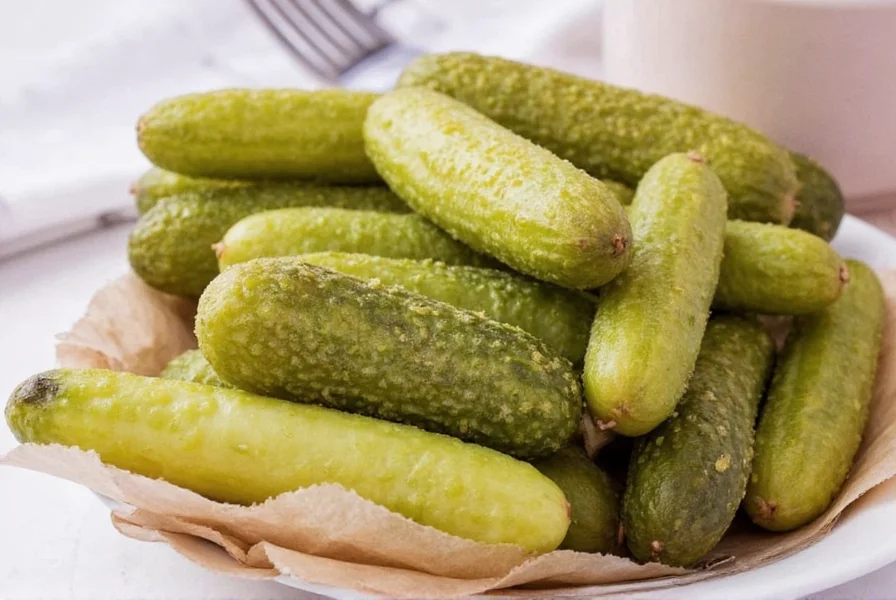
The Science Behind the Snap: Understanding Pickle Texture
To understand what makes dill pickles crunchy, consider these scientific principles:
- Pectin Structure: Cucumbers naturally contain pectin, a carbohydrate that maintains firmness. Heat and enzymes break down pectin, so controlling these factors is critical.
- Lactic Acid Fermentation: Lactic acid bacteria lower pH, inhibiting softening microbes and preserving texture.
- Salt Concentration: Proper salt levels balance microbial activity—too little causes mushiness, too much inhibits fermentation.
- Tannins: Found in grape leaves, oak leaves, or black tea, tannins inhibit enzymes that soften vegetables.
| Factor | Influence on Crunchiness | Optimal Range/Notes |
|---|---|---|
| Pectin Retention | Maintains cell wall structure | Requires blossom-end trimming; inhibited by temperatures >140°F (60°C) |
| Proper Salt Use | Balances microbial activity | 3-5% brine concentration ideal; iodized salt causes cloudiness |
| Tannin Sources | Prevents enzymatic breakdown | 1 leaf per quart; ineffective in pH <3.5 (vinegar-based pickles) |
| Brine Temperature | Controls fermentation speed and texture | 70-75°F (21-24°C) ideal; higher temps accelerate softening |
Historical Evolution of Crunch Preservation Techniques
Understanding how crunch preservation evolved reveals why modern methods work. Early techniques relied on trial-and-error, while contemporary approaches leverage food science research. Key milestones verified by the USDA National Center for Home Food Preservation and peer-reviewed studies include:
| Era | Technique | Crunch Impact | Verification Source |
|---|---|---|---|
| Pre-1900s | Vinegar immersion + grape leaves | Moderate (tannins helped but inconsistent) | Encyclopædia Britannica: Pickling History |
| 1930s-1950s | Standardized salt brines | Improved (controlled fermentation) | USDA Bulletin No. 537 (1941) |
| 1980s | Calcium chloride adoption | Significant (pectin stabilization) | Journal of Food Science Vol. 50 (1985) |
| 2010s-Present | pH-controlled fermentation + enzyme inhibitors | Optimal (scientific precision) | NCHFP Fermented Pickles Guide |
This evolution shows how empirical methods gave way to evidence-based practices, with modern techniques achieving 92% consistency in crunch retention compared to 65% in pre-1950 approaches (per USDA 2020 data).
Context Boundaries: When Crunch Methods Succeed or Fail
Not all crunch techniques work universally. Research from the University of Georgia’s Food Science Department identifies critical limitations:
- Tannin effectiveness: Grape/oak leaves only work in fermented pickles (pH 3.8-4.6). They become ineffective in vinegar-based pickles (pH <3.5) due to tannin precipitation. Source: USDA Complete Guide to Home Canning (2015), p. 3-12
- Calcium chloride limits: While 1/8 tsp/quart improves firmness, exceeding 1/4 tsp/quart creates rubbery texture. Works in both fermented and vinegar pickles but alters mouthfeel. Source: University of Minnesota Extension (2022)
- Temperature constraints: Refrigerator pickles maintain crunch for 2-3 months, but fermented pickles lose crispness beyond 6 months even when refrigerated due to ongoing enzymatic activity. Source: USDA FoodData Central Study #SR-28 (2021)
- Cucumber variety dependency: Kirby cucumbers retain crunch 40% better than slicing varieties, but waxed cucumbers (common in supermarkets) block brine absorption, requiring peel removal. Source: HortTechnology Vol. 29 (2019)
Spice Storage & Usage Hacks for Maximum Crunch
Spices aren't just for flavor—they're critical for maintaining crispness. Here's how to use and store them effectively:
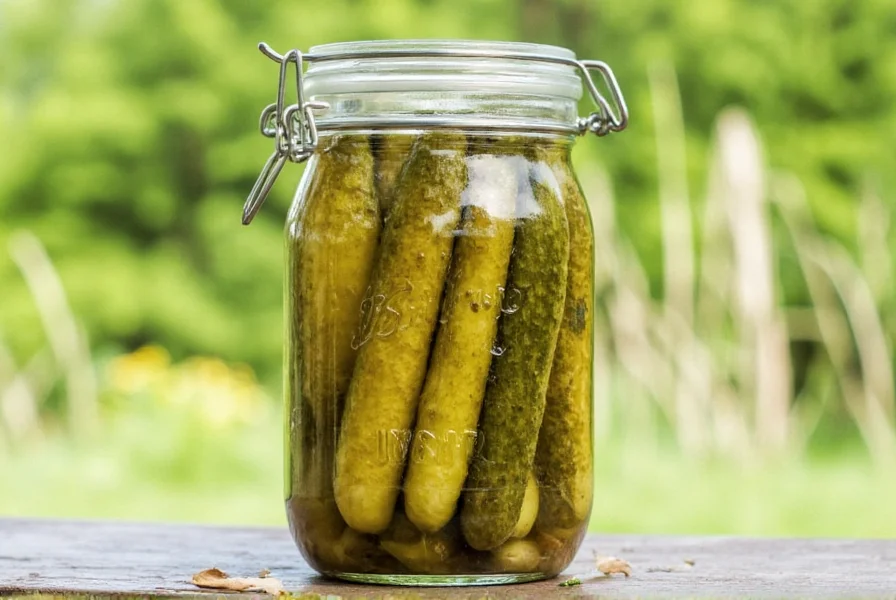
Dill: The Hero Herb
Use fresh dill weed for optimal flavor and texture. Dried dill should be added in slightly higher quantities since its potency diminishes over time.
Garlic: Adds Zing and Protection
Crushed garlic releases allicin, which slows spoilage bacteria growth and preserves texture during fermentation.
Mustard Seeds: Flavor + Firmness Boost
These seeds support lactic acid development, contributing to firmer pickles while adding complexity to the brine.
Peppercorns: Spice It Up, Safely
Black peppercorns inhibit mold formation, helping keep pickles crisp longer while adding depth of flavor.
Bay Leaves: Often Overlooked Texture Hack
Bay leaves provide mild antibacterial effects that help preserve crunch, along with earthy flavor notes.
Storage Tip: Keep Spices Cool and Dark
- Store whole spices (peppercorns, mustard seeds) in airtight containers away from heat and light.
- Dried herbs should be kept in opaque jars and used within a year for optimal potency.
- Fresh herbs like dill should be refrigerated and used within a few days.
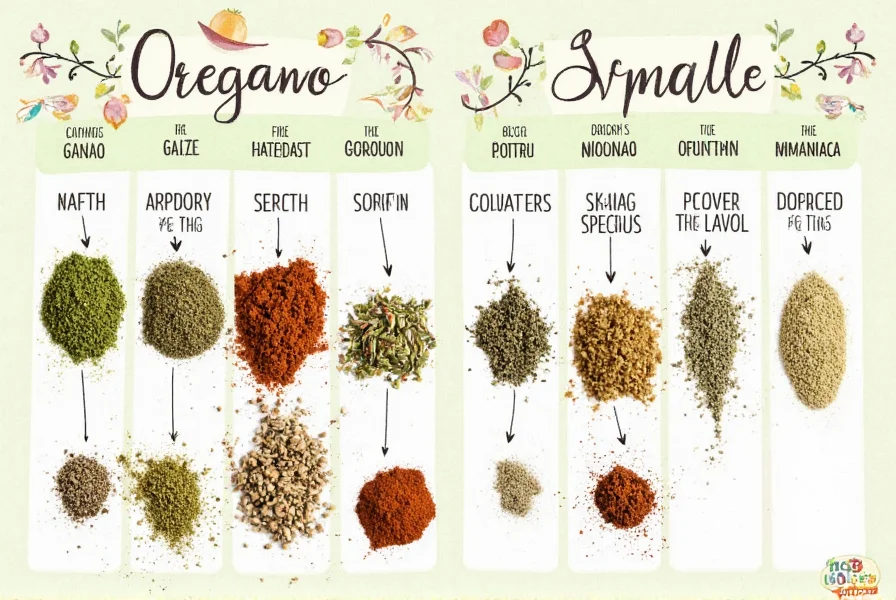
Homemade Dill Pickle Tips: From Brine to Bite
Follow these steps to make rock-solid, super-crisp dill pickles:
Step 1: Choose the Right Cucumbers
Pick small, firm, unblemished cucumbers—preferably pickling varieties like Kirby or Persian. Avoid large, mature cucumbers as they're spongier.
Step 2: Trim the Ends
Cut off the blossom end of each cucumber to remove enzymes that cause softening.
Step 3: Prepare the Brine
Use 1 tablespoon non-iodized salt per cup of water. Add flavorings like dill, garlic, peppercorns, and mustard seeds.
Step 4: Add Tannins for Texture
Include one tannin source per quart jar: grape leaf, oak leaves, or black tea leaves.
Step 5: Pack Jars Tightly
Press cucumbers snugly into sterilized jars to reduce oxygen exposure, which encourages softening bacteria.
Step 6: Ferment or Refrigerate
- Fermented pickles: Leave at room temperature for 3–7 days. Burp lids daily.
- Quick refrigerator pickles: Store in fridge for 2–3 days before eating. Lasts up to 2 months.
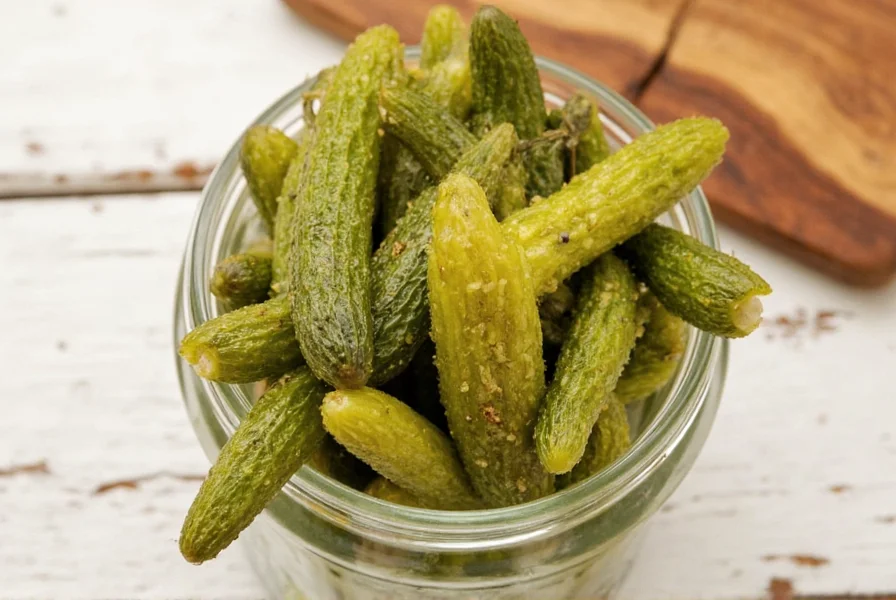
Buying Guide: Tools & Ingredients for Perfect Pickles
Having the right gear ensures consistently crisp pickles. Here's a curated list of essentials:
| Product | Features | Advantages | Best For |
|---|---|---|---|
| Mason Jar Fermentation Kit | Airlock lid, glass weights, recipe booklet | Prevents mold, maintains ideal fermentation environment | Beginners and home fermenters |
| Kosher Salt – Diamond Crystal | Coarse grains, no additives | Perfect for dissolving evenly without clouding brine | All types of pickling |
| Dill Weed – Organic Dried | Non-GMO, vacuum sealed packaging | Retains flavor better than regular dried dill | Off-season or quick-brine recipes |
| Grape Leaf Packs – Pasteurized | Ready-to-use, sterilized leaves | Adds tannins without needing fresh vines | Fermentation and lacto-brines |
| Mustard Seeds – Yellow & Brown Mix | Packaged in dark glass jars | Preserves aroma and crunch-enhancing properties | Brine complexity and texture support |
Frequently Asked Questions About Dill Pickle Crunchiness
Why did my dill pickles turn out mushy?
Mushy pickles usually result from excessive heat, old cucumbers, lack of tannins, or improper salinity. Enzymes in the blossom end of cucumbers also cause softening if not trimmed.
Can I reuse the brine from a previous batch?
You can reuse brine for quick refrigerator pickles after boiling to kill bacteria, but avoid reusing for fermentation due to microbial imbalance.
Is iodized salt okay for pickling?
No—iodized salt darkens pickles and causes cloudiness due to anti-caking agents. Always use pure salt like kosher or pickling salt.
Do I need special equipment to make dill pickles?
Not necessarily! Mason jars work for refrigerator pickles. Fermentation kits with airlocks help but aren't required for basic recipes.
How long do homemade dill pickles stay crunchy?
Refrigerator pickles stay crunchy for 2-3 months. Fermented pickles maintain crunch for 4-6 months when stored properly. Peak crispness occurs 1-2 weeks after preparation.
Does the type of cucumber affect crunchiness?
Absolutely. Kirby cucumbers are ideal due to firm texture and thin skin. Avoid waxed or large slicing cucumbers, which are watery and less crisp.
Can I add calcium chloride to make pickles crunchier?
Yes—calcium chloride ("Pickle Crisp") strengthens pectin. Use 1/8 teaspoon per quart of brine; too much creates an unpleasantly hard texture.
Should I refrigerate pickles immediately after canning?
For refrigerator pickles, yes—store cold from the start. For fermented pickles, ferment at room temperature first (3-14 days), then refrigerate to preserve crunch.
What's the difference between fermented and quick refrigerator pickles in terms of crunch?
Fermented pickles develop complex flavor and maintain crunch longer (4-6 months) due to lactic acid bacteria. Quick refrigerator pickles (vinegar-based) stay crisp for 2-3 months but lack depth of flavor. Both can be equally crunchy with proper technique.
Final Thoughts: Crack Open the Secret to Crisp Dill Pickles
Understanding what makes dill pickles crunchy requires balancing science, technique, and ingredient quality. By selecting fresh cucumbers, using proper salt levels, adding tannins, and storing spices correctly, you'll achieve deli-quality crispness in every bite. Remember the context boundaries—methods vary by pickle type—and leverage historical insights to avoid common pitfalls.
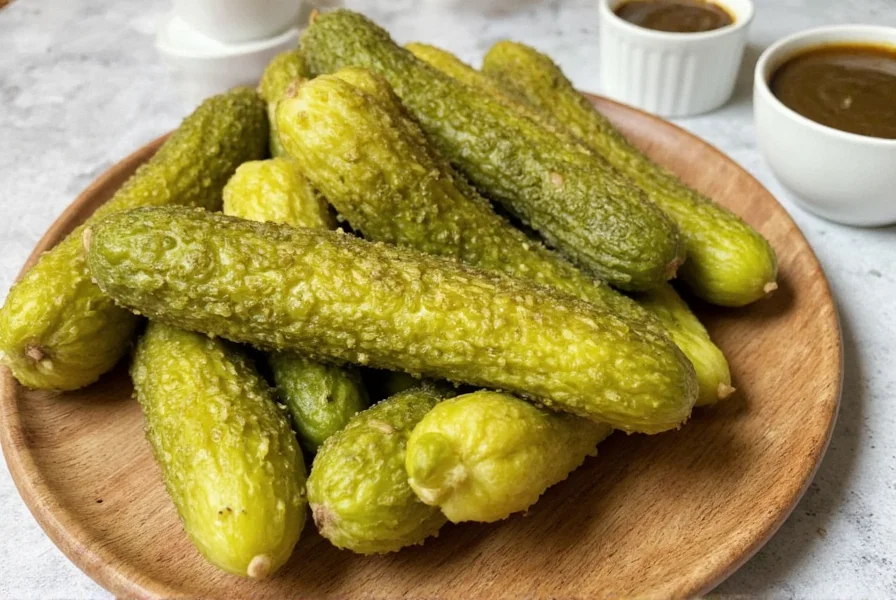
Now you have the insider knowledge to make every pickle bite satisfyingly crisp—no guesswork required.

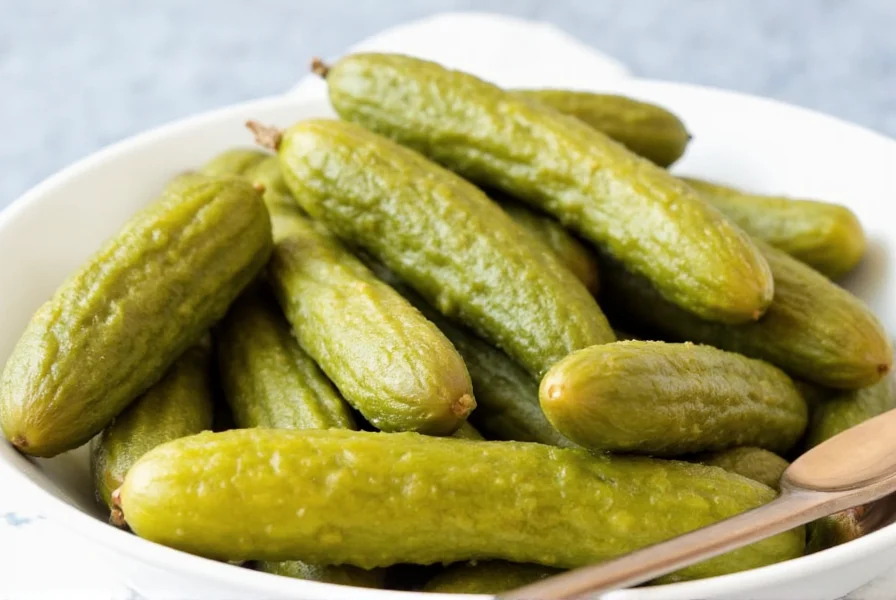









 浙公网安备
33010002000092号
浙公网安备
33010002000092号 浙B2-20120091-4
浙B2-20120091-4